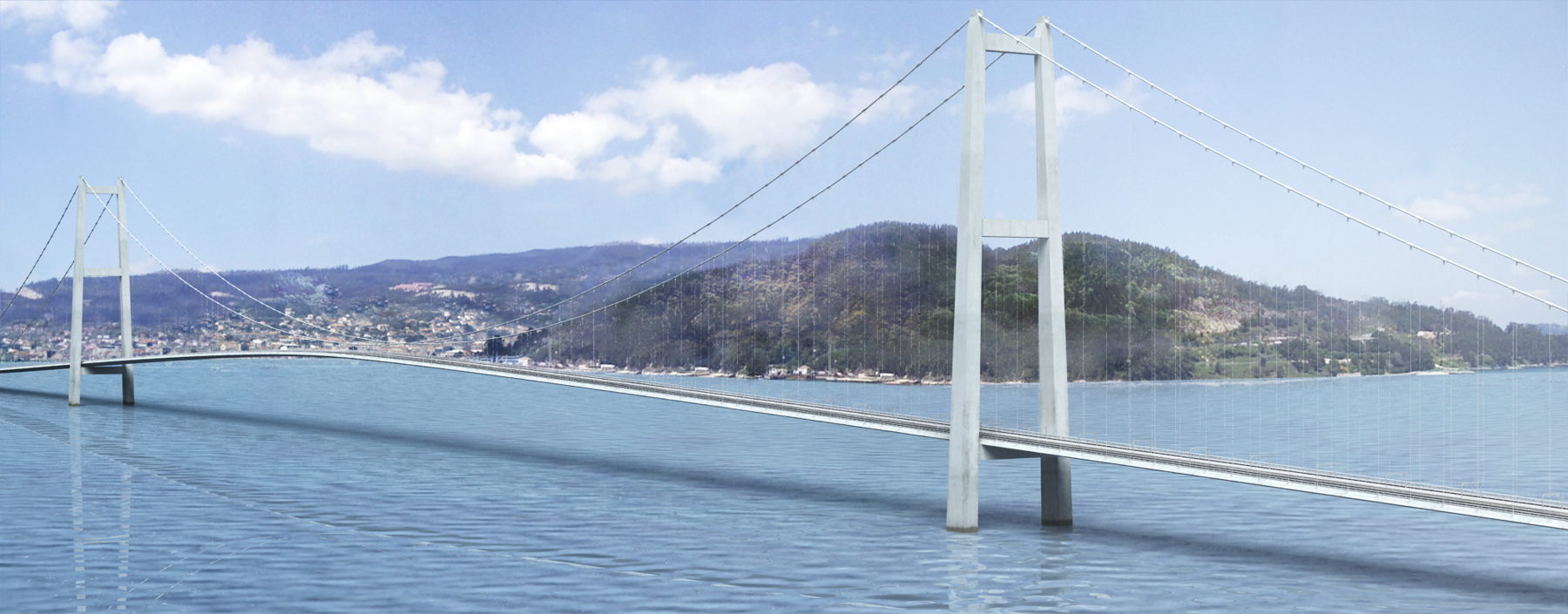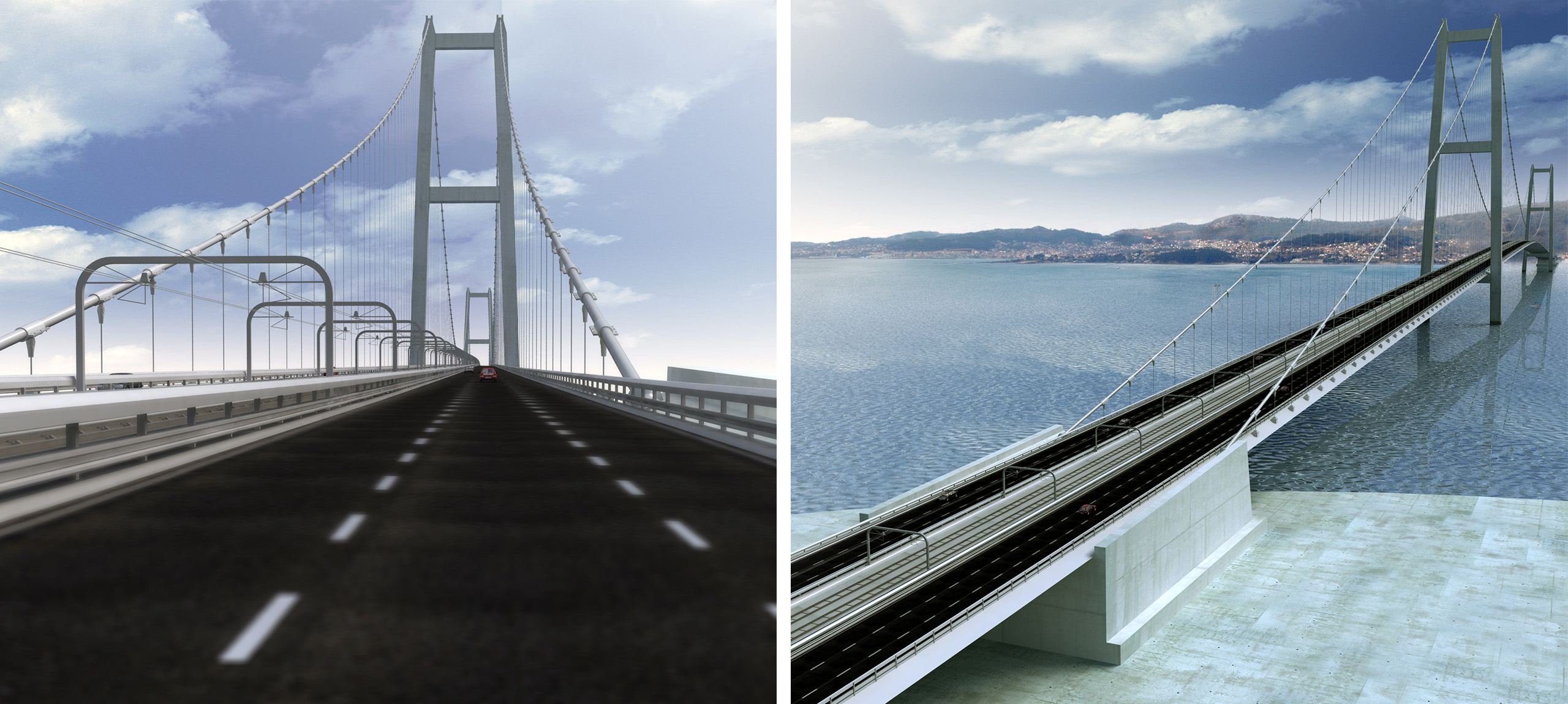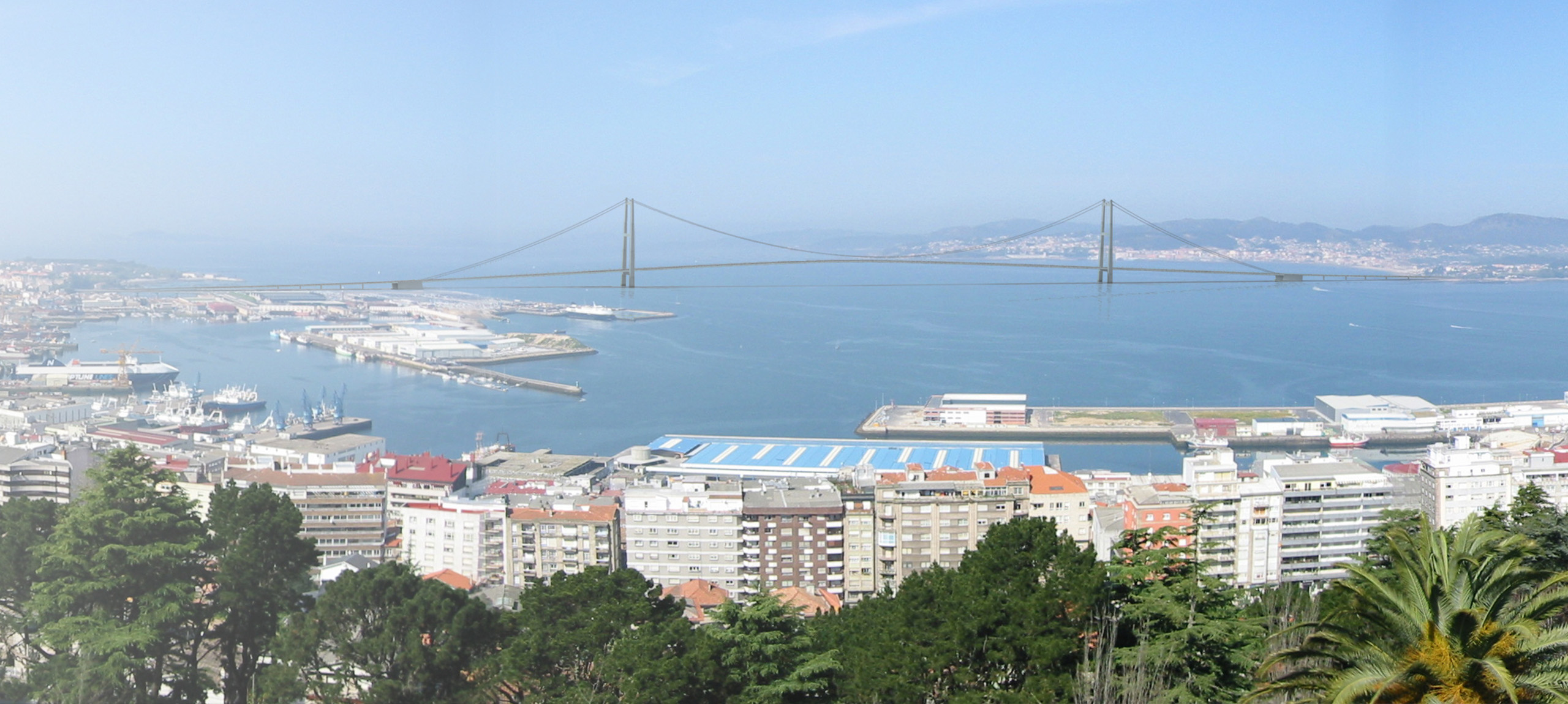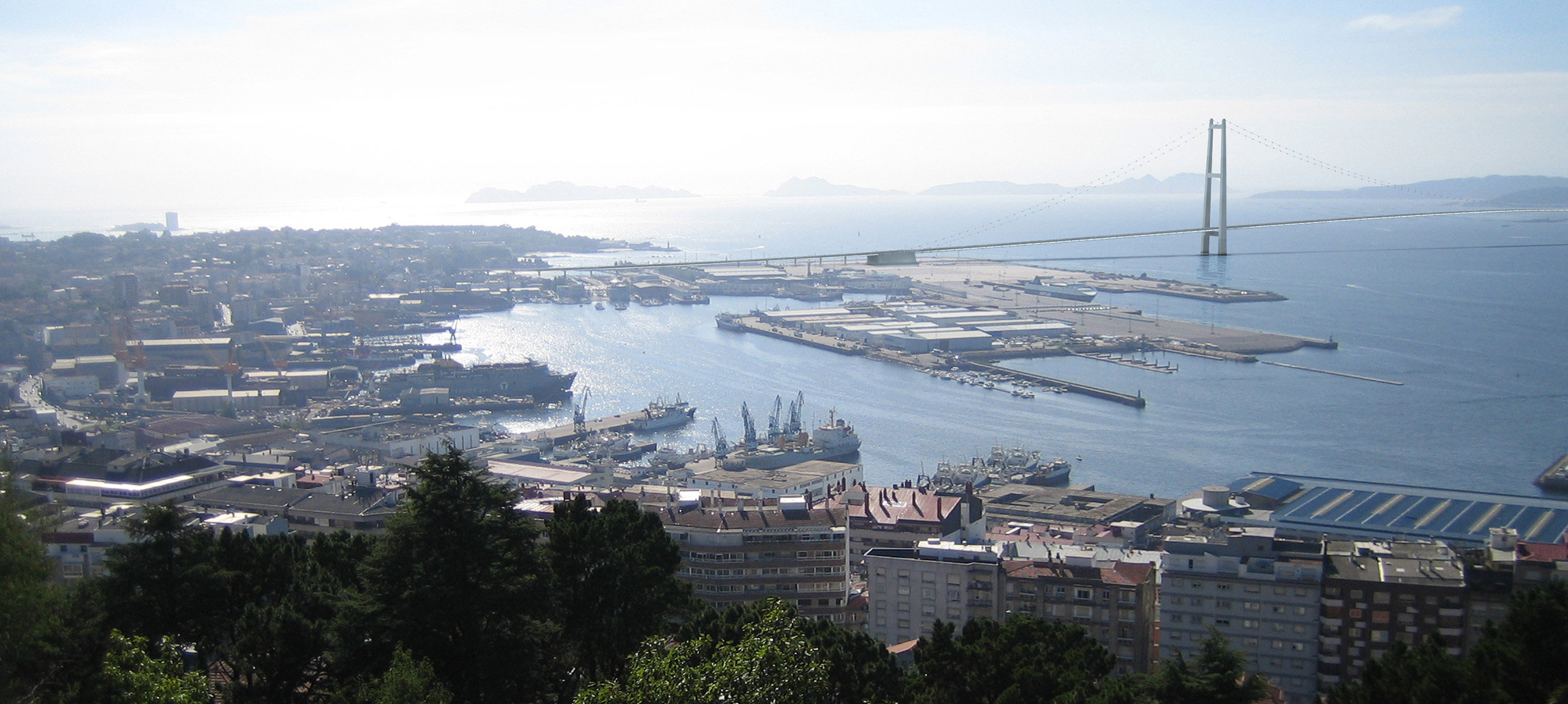
| Bridge over Vigo estuary | |
| Cangas-Vigo, España | |
| Structural typology | Puentes Colgantes |
| Date | February, 2009 |
| Scope | Preliminary design |
The bridge will connect the City of Vigo with the Morrazo Peninsula with the aim to alleviate the already saturated traffic network in the area especially the Rande bridge. It will begin in the southern area of the duty-free area of Vigo Port and will end up on the Northern Side near Punta Rodeira on the Mozzara Peninsula. The proposed structural solution is a 2,700m long suspension bridge, with a 1,500m central span which will allow current sea traffic maneuvers with a horizontal clearance of around 300m and a free height clearance greater than 50m. The transversal cross-section employed in this solution is 43.0m wide which accommodates a 3-lane motorway and two tracks for a light railway which imposes a 4% longitudinal slope limitation on the deck.
The main piers have their foundation levels established at -22m on the Vigo side and -9m on the Cangas side, which are both technically viable as well as being economically acceptable.
The main cables are continuous from the anchors blocks which are located at both extremes. The blocks work by gravity and therefore anchor themselves by gravity load, hence obtaining sufficient friction to anchor the stretch of the cables through the elevated weight of these elements.
The main piers have their foundation levels established at -22m on the Vigo side and -9m on the Cangas side, which are both technically viable as well as being economically acceptable.
The main cables are continuous from the anchors blocks which are located at both extremes. The blocks work by gravity and therefore anchor themselves by gravity load, hence obtaining sufficient friction to anchor the stretch of the cables through the elevated weight of these elements.








